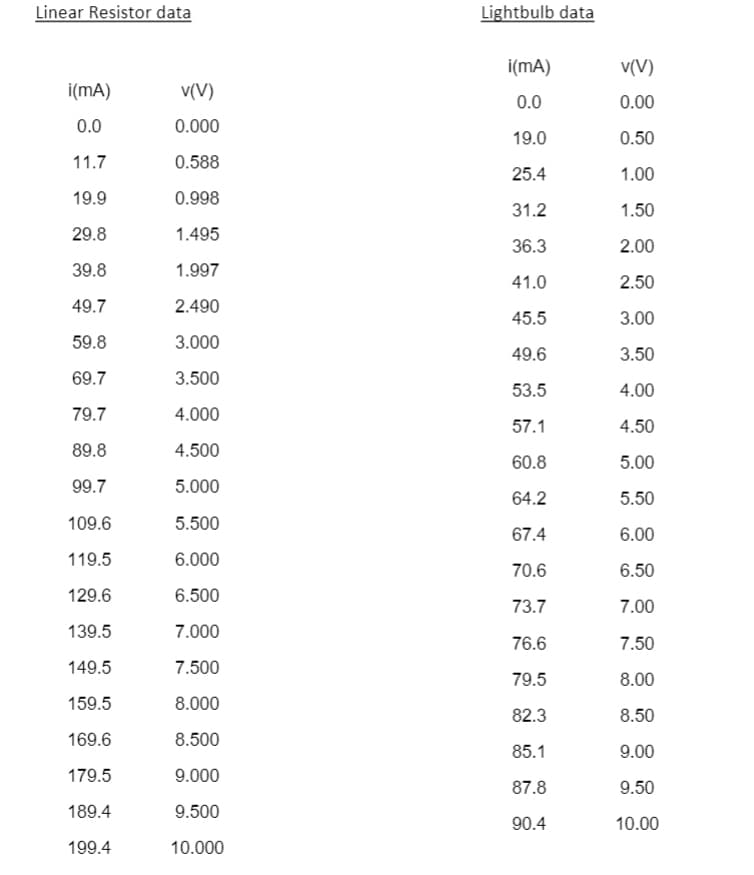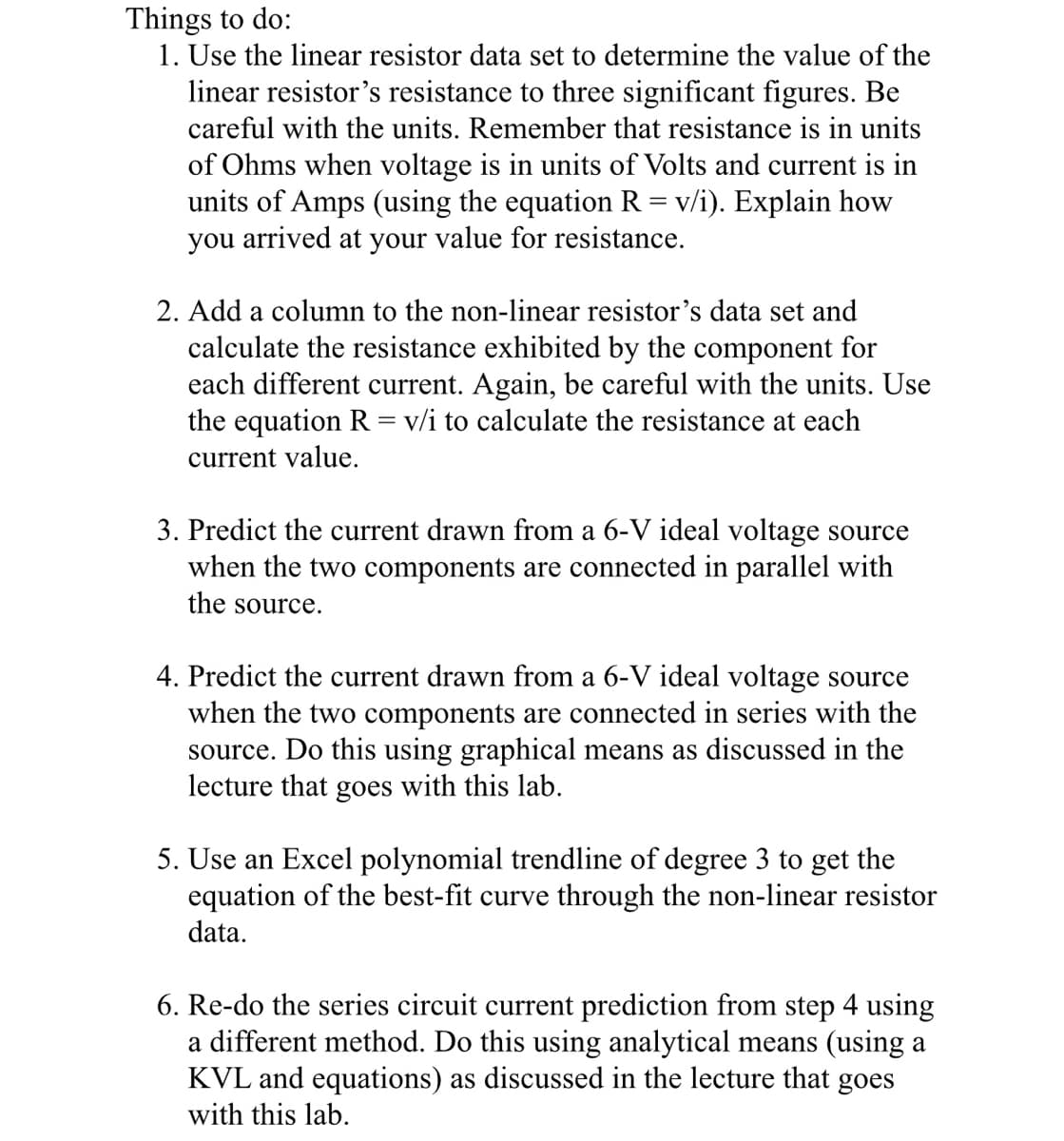Linear Resistor data Lightbulb data i(mA) v(V) i(mA) v(V) 0.0 0.00 0.0 0.000 19.0 0.50 11.7 0.588 25.4 1.00 19.9 0.998 31.2 1.50 29.8 1.495 36.3 2.00 39.8 1.997 41.0 2.50 ΔΩ 7 2 490
Linear Resistor data Lightbulb data i(mA) v(V) i(mA) v(V) 0.0 0.00 0.0 0.000 19.0 0.50 11.7 0.588 25.4 1.00 19.9 0.998 31.2 1.50 29.8 1.495 36.3 2.00 39.8 1.997 41.0 2.50 ΔΩ 7 2 490
Chapter28: Overcurrent Protection–fuses And Circuit Breakers
Section: Chapter Questions
Problem 11R: State four possible combinations of service equipment that meet the requirements of 110.9 and 110.10...
Related questions
Question

Transcribed Image Text:Linear Resistor data
Lightbulb data
i(mA)
v(V)
i(mA)
v(V)
0.0
0.00
0.0
0.000
19.0
0.50
11.7
0.588
25.4
1.00
19.9
0.998
31.2
1.50
29.8
1.495
36.3
2.00
39.8
1.997
41.0
2.50
49.7
2.490
45.5
3.00
59.8
3.000
49.6
3.50
69.7
3.500
53.5
4.00
79.7
4.000
57.1
4.50
89.8
4.500
60.8
5.00
99.7
5.000
64.2
5.50
109.6
5.500
67.4
6.00
119.5
6.000
70.6
6.50
129.6
6.500
73.7
7.00
139.5
7.000
76.6
7.50
149.5
7.500
79.5
8.00
159.5
8.000
82.3
8.50
169.6
8.500
85.1
9.00
179.5
9.000
87.8
9.50
189.4
9.500
90.4
10.00
199.4
10.000

Transcribed Image Text:Things to do:
1. Use the linear resistor data set to determine the value of the
linear resistor's resistance to three significant figures. Be
careful with the units. Remember that resistance is in units
of Ohms when voltage is in units of Volts and current is in
units of Amps (using the equation R = v/i). Explain how
you arrived at your value for resistance.
2. Add a column to the non-linear resistor's data set and
calculate the resistance exhibited by the component for
each different current. Again, be careful with the units. Use
the equation R = v/i to calculate the resistance at each
current value.
3. Predict the current drawn from a 6-V ideal voltage source
when the two components are connected in parallel with
the source.
4. Predict the current drawn from a 6-V ideal voltage source
when the two components are connected in series with the
source. Do this using graphical means as discussed in the
lecture that goes with this lab.
5. Use an Excel polynomial trendline of degree 3 to get the
equation of the best-fit curve through the non-linear resistor
data.
6. Re-do the series circuit current prediction from step 4 using
a different method. Do this using analytical means (using a
KVL and equations) as discussed in the lecture that goes
with this lab.
Expert Solution
This question has been solved!
Explore an expertly crafted, step-by-step solution for a thorough understanding of key concepts.
Step by step
Solved in 4 steps with 1 images

Knowledge Booster
Learn more about
Need a deep-dive on the concept behind this application? Look no further. Learn more about this topic, electrical-engineering and related others by exploring similar questions and additional content below.Recommended textbooks for you

EBK ELECTRICAL WIRING RESIDENTIAL
Electrical Engineering
ISBN:
9781337516549
Author:
Simmons
Publisher:
CENGAGE LEARNING - CONSIGNMENT

EBK ELECTRICAL WIRING RESIDENTIAL
Electrical Engineering
ISBN:
9781337516549
Author:
Simmons
Publisher:
CENGAGE LEARNING - CONSIGNMENT